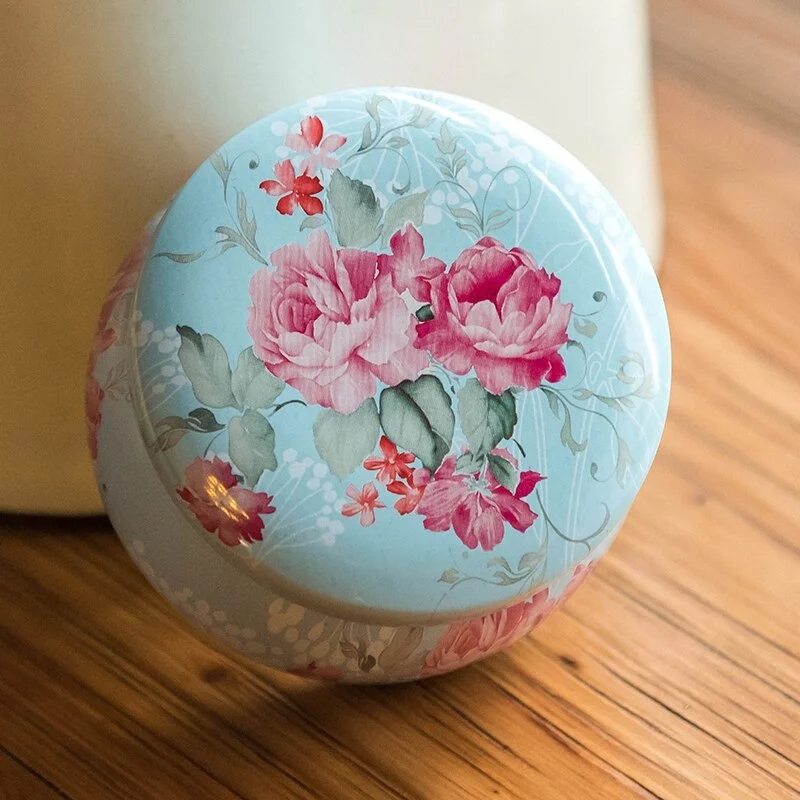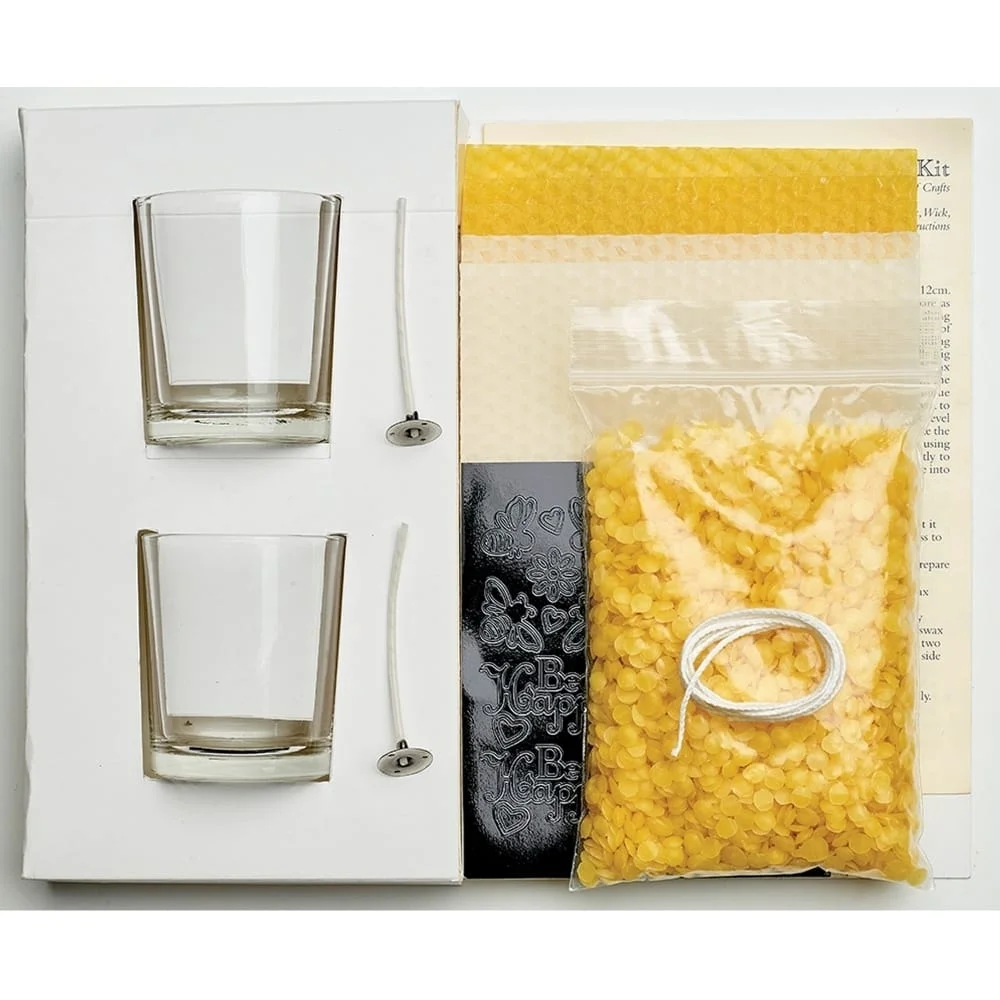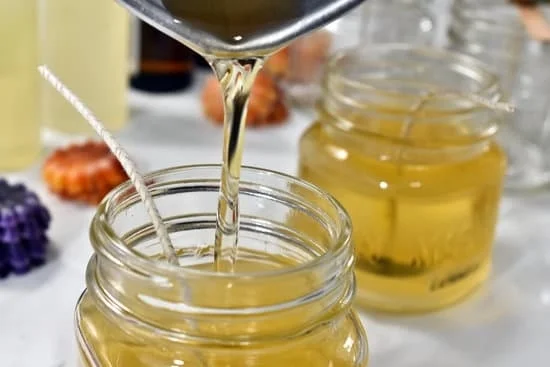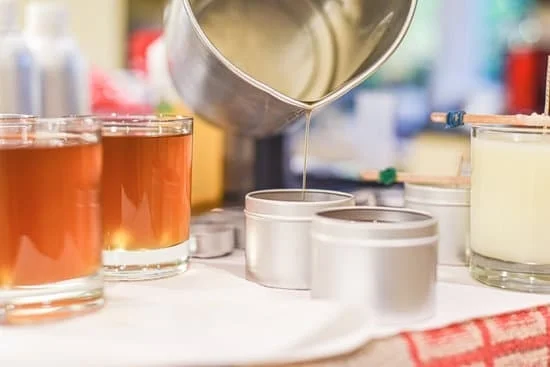Essential oils have long been prized for their aromatic and therapeutic properties, and they can add a delightful fragrance to your homemade candles. In this article, we will explore the world of essential oils for candle making, providing you with a comprehensive guide to incorporating these natural scents into your creations.
Candle making is an ancient art that has been practiced for centuries. From the humble beginnings of using animal fats as fuel to the sophisticated methods employed today, candles have always served a dual purpose of providing light and creating a relaxing ambiance. By incorporating essential oils into your candles, you can enhance their sensory experience and create a warm, inviting atmosphere in any space.
Why should you use essential oils in your candle making? There are numerous reasons why these concentrated plant extracts make a great addition to your homemade candles. Essential oils offer unique fragrances that are unlike synthetic fragrances found in commercial candles.
These natural scents not only smell better but also provide potential therapeutic benefits, such as promoting relaxation or boosting mood. With essential oils, you can create personalized candles that cater to your specific preferences and meet your desired aromatherapy effects.
When it comes to choosing the right essential oils for your candle-making project, it’s important to consider factors such as scent strength, compatibility with other oils, and safety precautions. Not all essential oils can withstand the heat of a burning candle or retain their fragrance over time.
In the following sections of this article, we will delve deeper into how to properly measure and add essential oils to your candle, blend them together for unique fragrances, maximize their scent throw in your finished product, and follow safety precautions throughout the process. So let’s dive in and discover the world of essential oils for candle making.
Why use Essential Oils in Candle Making?
Essential oils offer numerous benefits when used in candle making. They not only add a delightful fragrance to your candles, but they also provide therapeutic and health benefits. This section will explore the reasons why using essential oils in candle making can enhance your overall experience.
Firstly, using essential oils allows you to create unique and customizable scents for your candles. Unlike synthetic fragrances, which often have a one-size-fits-all approach, essential oils offer a wide range of aromas that can be mixed and matched to create your desired scent profile. Whether you prefer floral, citrus, woody, or spicy scents, there is an essential oil to suit every preference.
In addition to their pleasant fragrance, essential oils also have therapeutic properties that can promote relaxation, uplift the mood, or even alleviate certain ailments. For example, lavender essential oil is known for its calming effects and is commonly used in candles designed for relaxation or sleep. On the other hand, peppermint essential oil is invigorating and energizing, making it a popular choice for candles used to boost focus and concentration.
When incorporating essential oils into your candle making process, it’s important to choose oils that are safe for use in candles and have good scent throw. Some essential oils may evaporate quickly or lose their fragrance when exposed to heat. Therefore, selecting high-quality essential oils that are specifically formulated for candle making will ensure optimal scent performance and longevity.
Overall, using eEssential oils in candle making not only adds pleasing aromas but also provides various therapeutic benefits. The next section will delve into how to choose the right essential oils for your candles based on different factors such as scent profiles and desired effects.
| Benefits of Using Essential Oils in Candle Making |
|---|
| Customizable scents |
| Therapeutic and health benefits |
| A wide range of aroma options |
| Promotes relaxation and uplifts mood |
| Enhances focus and concentration |
Choosing the Right Essential Oils for Your Candle
When it comes to choosing the right essential oils for your candle, there are a few factors to consider. First and foremost, you want to select oils that are high-quality and 100% pure. These oils will have a stronger scent and better performance in your candles. Look for oils that are specifically labeled for candle making, as these have been tested and formulated to work well in wax.
Next, consider the scent profile you want to achieve with your candle. Essential oils come in a wide range of aromas, from floral and herbal to citrus and woody. Think about the mood or atmosphere you want your candle to create, whether it be calming and relaxing or energizing and invigorating. Consider the preferences of those who will be enjoying the candle as well.
It’s also important to keep in mind any potential sensitivities or allergies when choosing essential oils for your candles. Certain fragrances can trigger reactions in some individuals, so it’s best to choose scents that are generally well-tolerated. Additionally, it’s a good idea to test out different combinations of essential oils before committing to a final blend. This way, you can see how different scents work together and adjust the ratios if needed.
To help with the decision-making process, here is a list of popular essential oils used in candle making:
- Lavender: Known for its calming properties, lavender is a great choice for creating relaxation candles.
- Peppermint: With its refreshing scent, peppermint is perfect for creating invigorating and uplifting candles.
- Vanilla: Vanilla adds a warm and cozy aroma to candles, making them perfect for creating a comforting atmosphere.
Benefits of Choosing the Right Essential Oils
Choosing the right essential oils for your candles can have various benefits. Firstly, using high-quality essential oils ensures that your candles emit a strong and pleasant fragrance when burned. This can enhance the overall ambiance of your space and create a more enjoyable experience for anyone in the room.
In addition, certain essential oils have therapeutic properties that can benefit your well-being. For example, lavender essential oil has been shown to promote relaxation and improve sleep quality. By incorporating this oil into your candle, you can create a soothing and calming environment that promotes restful sleep.
Furthermore, selecting the right scents for your candles allows you to personalize the atmosphere to suit different occasions or moods. Whether you want to create a romantic setting with floral scents or a fresh and invigorating environment with citrus aromas, choosing the right essential oils can help you achieve this.
Overall, by carefully choosing the essential oils for your candles, you can elevate their performance and maximize their impact on both the atmosphere and well-being of those around them.
Top Essential Oils for Candle Making and Their Benefits
One of the key aspects of making scented candles is choosing the right essential oils to create the desired fragrance. With so many options available, it can be overwhelming to know which ones to select. In this section, we will explore some of the top essential oils for candle making and their benefits.
1. Lavender Essential Oil: Known for its calming and soothing properties, lavender essential oil is a popular choice for candles. It has a sweet floral scent that can help promote relaxation and reduce stress.
2. Eucalyptus Essential Oil: If you’re looking for a refreshing and invigorating scent, eucalyptus essential oil is an excellent option. It has a cooling effect and can clear your mind, making it perfect for creating a spa-like atmosphere in your home.
3. Citrus Essential Oils (Lemon, Orange, Grapefruit): Citrus essential oils have bright and uplifting scents that can energize your space. Lemon essential oil is known for its purifying properties, while orange and grapefruit essential oils are often used to create a cheerful ambiance.
4. Peppermint Essential Oil: The strong and minty aroma of peppermint essential oil can provide a sense of clarity and alertness. It also has a cooling effect that can help relieve headaches or sinus congestion.
5. Vanilla Essential Oil: Vanilla has a warm and comforting scent that is often associated with relaxation and happiness. Adding vanilla essential oil to your candles can create a cozy and inviting atmosphere.
These are just a few examples of the top essential oils used in candle making. Keep in mind that different oils have different scent strengths, so you may need to adjust the amount used based on personal preference or desired fragrance intensity.
| Essential Oil | Benefits |
|---|---|
| Lavender | Calming, soothing, reduces stress |
| Eucalyptus | Refreshes, invigorates, clears mind |
| Citrus (Lemon, Orange, Grapefruit) | Brightens, uplifts, purifies |
| Peppermint | Clarifies, energizes, relieves headaches/congestion |
| Vanilla | Warmth, comfort, inviting atmosphere |
Remember to choose essential oils that you personally enjoy and that align with the mood or ambiance you want to create in your space. Experimenting with different combinations can also lead to unique and enticing fragrances for your candles.
How to Properly Measure and Add Essential Oils to Your Candle
Measuring Essential Oils for Your Candle
When it comes to adding essential oils to your candles, it is important to measure them accurately to achieve the desired scent strength and avoid overpowering or underwhelming fragrances. One common rule of thumb is to use approximately 1 ounce of essential oil per pound of wax. However, keep in mind that some essential oils are stronger than others, so adjustments may be necessary.
To measure your essential oils accurately, you can use a dropper or pipette for precise measurements. Another option is using a scale to weigh the essential oils, especially if you are making larger batches of candles. Regardless of the method you choose, always refer to the specific guidelines provided by the candle-making product manufacturer or your chosen recipe.
Adding Essential Oils at the Right Stage
It is crucial to add essential oils at the correct stage during the candle-making process for optimal scent distribution. The recommended time is when your melted wax has reached a temperature between 180°F and 185°F (82°C and 85°C). Adding the oils at this stage allows them to incorporate fully into the wax without evaporating too quickly.
Be sure not to add your essential oils when the wax is too hot as this may cause them to lose their fragrance potency or burn off completely. It’s also important not to add them too early in the cooling process as they might settle on top instead of being evenly distributed throughout the candle.
Tips for Blending Essential Oils
Blending different essential oils together can create unique and personalized fragrances for your candles. When blending essential oils, start with a small amount of each oil and mix them together before adding more. This way, you can adjust and experiment with various combinations until you find the perfect blend.
Consider blending essential oils from different fragrance families such as floral, citrus, herbal, or woody to create complex and well-rounded scents. Keep track of your blends by making note of the ratios and adjustments you make, ensuring that you can reproduce your favorite combinations in the future.
Remember to start with a light hand when blending essential oils as some scents can be overpowering. It’s always easier to add more oil than to dilute an overly potent fragrance. Don’t be afraid to get creative and have fun with this process as it allows you to personalize your candle-making experience even further.
Blending Essential Oils for Unique Candle Fragrances
Creating unique and captivating scents is one of the most exciting aspects of candle making. By blending different essential oils, you can customize the fragrance of your candles to suit any mood or occasion. Whether you prefer floral, citrusy, woody, or spicy scents, there are endless possibilities for creating your own signature fragrances.
To start blending essential oils for candle making, it’s important to understand the different scent categories and how they interact with each other. Some essential oils blend harmoniously together, while others may overpower or clash with one another. Here are a few tips to help you create balanced and appealing fragrance blends:
- Familiarize yourself with scent notes: Essential oils are often classified into top notes, middle notes, and base notes based on their volatility and intensity. Top notes are usually lighter and more volatile, providing an initial burst of fragrance that quickly evaporates. Middle notes add body to the scent and contribute to its character.
Base notes are rich and long-lasting, helping to anchor the fragrance. When blending essential oils, aim to include a combination of top, middle, and base note oils for depth and complexity. - Start with a small quantity: When experimenting with new blends, start by mixing just a few drops of each essential oil until you achieve your desired scent profile. Blending in small quantities allows for easier adjustments if the scent isn’t balanced or if certain oils overpower others.
- Keep track of your blends: As you begin experimenting with different combinations of essential oils, keep a journal or log of your recipes. This will help you recreate successful blends in the future and make adjustments based on personal preferences.
Once you have become familiar with scent categories and have made simple blends successfully, feel free to get creative. Consider adding complementary scents from different categories or experimenting with unusual combinations that appeal to your senses. Blending essential oils for unique candle fragrances is a rewarding and artistic process that allows you to express your creativity while enhancing the ambiance of your space.
Tips and Tricks for Maximizing the Scent of Essential Oils in Candles
When it comes to making scented candles using essential oils, there are a few tips and tricks that can help maximize the scent and ensure a long-lasting fragrance. These tricks can enhance the overall candle-making experience and result in beautifully fragrant candles that fill your space with delightful aromas.
One important tip is to consider the fragrance strength of the essential oils you choose. Some essential oils have a stronger scent than others, so it’s crucial to take this into account when measuring and adding them to your candles. For example, lavender and peppermint essential oils tend to be quite potent, while citrus-based oils such as lemon or orange may need a slightly larger quantity to achieve a noticeable scent.
Another technique to maximize the scent of essential oils in candles is called “curing”. Curing refers to allowing the scented candles to sit for at least one week after pouring before lighting them. This resting period allows the fragrance from the essential oils to develop fully and evenly throughout the candle, resulting in a stronger scent when burned. Storing the cured candles in a cool, dark place further enhances their fragrance potency.
Additionally, it’s important to properly mix the essential oils with your wax prior to pouring them into your candle container. Thoroughly stir or gently shake the melted wax with the measured essential oils until they are well distributed. This ensures that each candle has an even distribution of fragrance throughout its entire burning time.
By following these tips and tricks, you can make sure that your scented candles retain their delightful aroma for longer periods while creating an inviting atmosphere in your home or workspace.
Safety Precautions when Using Essential Oils in Candle Making
Using essential oils in candle making can add a delightful fragrance to your candles, but it’s important to take proper safety precautions to ensure a safe and enjoyable experience. Here are some safety tips to keep in mind when using essential oils in candle making:
Research the Specific Essential Oil
Before using any essential oil in candle making, it’s crucial to research its specific properties and potential hazards. Some essential oils may be harmful if ingested or applied directly to the skin, while others may cause allergic reactions or irritate respiratory conditions. Understanding the potential risks associated with each oil will help you make informed decisions and handle them safely.
Follow Dilution Guidelines
Essential oils are highly concentrated, so it is necessary to dilute them properly before adding them to your candles. The recommended dilution ratio is typically 1 ounce of essential oil per pound of candle wax. Diluting the oils helps prevent excessive scent throw and ensures that they disperse evenly throughout the candle.
Avoid Overheating Essential Oils
When melting your wax, be mindful not to overheat the essential oils as this can cause them to lose their aromatic qualities or even become potentially dangerous. It’s best to add the essential oils once the melted wax has cooled slightly but is still liquid enough for blending. This will help preserve their fragrance and prevent any unnecessary risks.
Store Essential Oils Safely
Proper storage of essential oils is vital for maintaining their quality and longevity. Ensure that you store them in tightly sealed amber glass bottles away from direct sunlight, heat sources, and out of reach of children or pets. This will help prevent degradation and maintain their potency.
By following these safety precautions when using essential oils in candle making, you can enjoy beautifully scented candles without compromising on safety. Always prioritize safety when working with any potent substances, and don’t hesitate to seek guidance from experts or professionals if you have any concerns or questions.
FAQs about Essential Oils for Candle Making
As you explore the world of essential oils for candle making, you may have some questions about how to use them effectively and safely. Below are some frequently asked questions that can help guide you in your candle-making journey.
- Can I Use Any Essential Oil in My Candle?
- How Much Essential Oil Should I Add to My Candle?
- Can I Mix Different Essential Oils Together?
- How Long Will the Scent Last in My Candle?
- Are There any Safety Precautions I Should Take when Using Essential Oils in Candles?
While most essential oils can be used in candle making, it is important to consider their specific properties and potential interactions with other ingredients. Some essential oils have a low flash point, which means they may not be suitable for use in candles or may require special precautions. It’s always best to do your research and consult reputable sources before incorporating a particular essential oil into your candle recipe.
The amount of essential oil to add depends on factors such as the size of your candle, the desired scent strength, and the specific essential oil being used. As a general rule of thumb, it is recommended to use about 1 ounce of fragrance per pound of wax. However, this can vary depending on personal preference and the intensity of the oil’s aroma.
Absolutely. In fact, blending different essential oils together can create unique and complex fragrances for your candles. However, it is important to ensure that the oils you are combining are compatible and create a harmonious scent profile. Experimenting with small batches and keeping careful notes can help you find pleasing combinations that suit your preferences.
The longevity of the scent in your candle will depend on several factors including the type and concentration of essential oils used, as well as environmental conditions such as air flow and temperature fluctuations. Generally, high-quality essential oils tend to have longer-lasting scents compared to synthetic fragrances or lower-quality oils.
Yes, it is important to take certain safety precautions when using essential oils in candle making. Some essential oils are known to be skin irritants or can cause allergic reactions, so it’s important to handle them with care and follow proper safety guidelines. It’s also crucial to use essential oils in well-ventilated areas and keep them out of the reach of children and pets.
By keeping these frequently asked questions in mind, you will be better equipped to enjoy a safe and satisfying experience with essential oils in your candle making endeavors.
Conclusion
In conclusion, incorporating essential oils into your candle-making experience can greatly enhance the overall product and scent. By using essential oils, you have the ability to customize and create unique fragrances that cannot be replicated with synthetic fragrances. Not only do essential oils provide a natural and pleasant scent, but they also offer various benefits depending on the oil used.
When choosing the right essential oils for your candle, it is important to consider both the scent profile and the benefits associated with each oil. Certain oils, such as lavender or chamomile, can promote relaxation and reduce stress, while others like peppermint or eucalyptus can provide an invigorating and refreshing atmosphere. Experimenting with different combinations of essential oils can result in creating your signature fragrance that sets your candles apart from others.
To properly measure and add essential oils to your candles, it is crucial to follow specific guidelines based on the type of wax being used. Adding too much essential oil can overpower the aroma or even cause safety hazards such as excessive smoke or flame fluctuations. Always conduct a small test batch before making larger quantities of candles to ensure the desired scent strength is achieved.
Additionally, maximizing the scent of essential oils in candles involves various techniques such as using proper wick sizes, curing candles for an optimal amount of time, and storing them in suitable containers. Following these tips and tricks will help preserve the fragrance potency for an extended period.
Remember to prioritize safety precautions when using essential oils in candle-making. Essential oils are highly concentrated substances that may cause skin irritation or allergic reactions if mishandled. Always use caution when handling undiluted essential oils and adhere to proper storage guidelines to prevent degradation over time.
Incorporating essential oils into your candle-making process not only allows you to indulge in personal creativity but also offers numerous benefits for mind and body wellness. With careful selection, measurement, blending techniques, and safety awareness in mind, you can elevate your candle-making experience and create products that fill a room with delightful fragrance and positive energy.

Welcome to my candle making blog! In this blog, I will be sharing my tips and tricks for making candles. I will also be sharing some of my favorite recipes.





